This post features solutions to fix Error 0x80030001; Unable to perform requested operation. The error occurs while trying to transfer/import media from an external device connected to Windows PC. The complete error message reads:
An unexpected error is keeping you from copying the file. If you continue to receive this error, you can use the error code to search for help with this problem.
Error 0×80030001:Unable to perform requested operation.
Fortunately, you can follow some simple suggestions to fix the error.
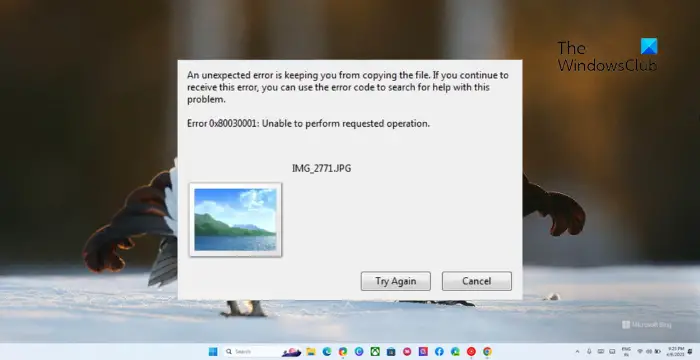
What is error 0x80030001?
The error code 0x80030001, Unable to perform requested operation, occurs in Windows 11 devices while transferring data from a mobile or external storage device to the device. This error could occur due to a corrupted disk, File access or permission issues. Conflicts from third-party apps or Insufficient disk space.
This can also happen if you search for a file and then try to copy and paste from the search results. What you can do is right-click on the file and click on Open file location, and then copy the file.
Fix Error 0x80030001, Unable to perform requested operation while copying files
To fix the error 0x80030001 while transferring files from an external device to your PC, restart your device and reconnect the external storage device. If that doesn’t help, follow these suggestions:
- Run ChkDsk on your computers hard disk
- Try copying one file at a time
- Copy the file directly from the folder
- Clear space using Disk Cleanup
- Carry out the Copy operation in clean boot state
Let’s now see these in detail.
1] Run ChkDsk on your computer’s hard disk
Open an elevated CMD, type the following, and hit Enter:
chkdsk c: /r
You may be sked to restart your computer.
2] Try copying one file at a time
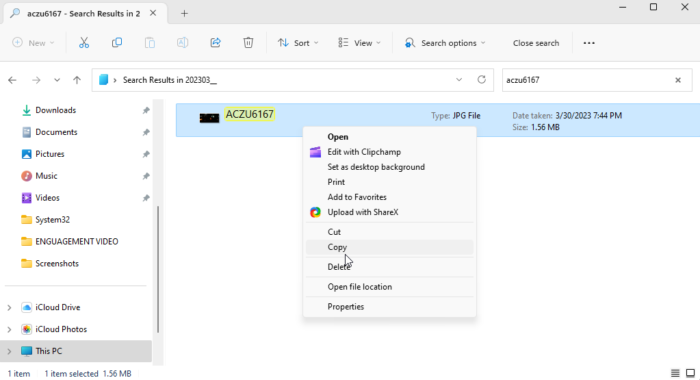
Next, try copying one file at a time. This has helped some users solve the error. Here’s how:
- Press Windows + E to open File Explorer and click on This PC in the left pane.
- Click on your Phone device or any other device available.
- Search for the file you want to copy using the search feature, right-click on it and select Copy.
- Open the location where you want to paste the file and press Ctrl + V to paste the file.
3] Copy the file directly from the folder
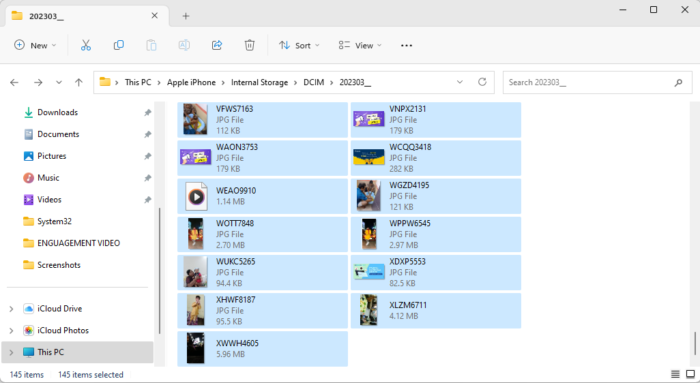
The error 0x80030001 can also occur if you’re trying to copy the files using the search feature. If so, try copying the files directly from the folder. Here’s how:
- Navigate to the location you want to copy the file from.
- Select the files you want to copy.
- Press Ctrl + C to copy the files.
- Now, navigate to the location you want to paste the file and press Ctrl + V to paste the file.
4] Clear space using Disk Cleanup
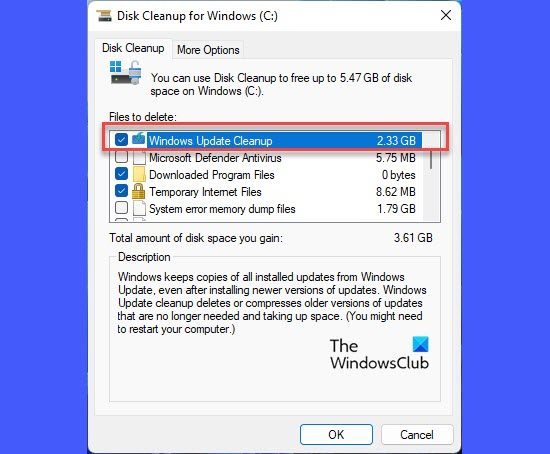
You may be unable to perform the requested operation if there isn’t enough storage space on your device. Using the Disk Cleanup tool can help clear space on your device. Here’s how:
- Search for Disk Cleanup and click open it.
- Select the files that you want to delete.
- The Disk Cleanup system will now ask for confirmation.
- Click on Delete Files to proceed.
- Do note that you will see more options if you click on Clean up system files.
- Using this option, you can delete all but the latest system restore points, Windows Update Cleanup, Previous Windows installations, etc.
5] Carry out the Copy operation in clean boot state
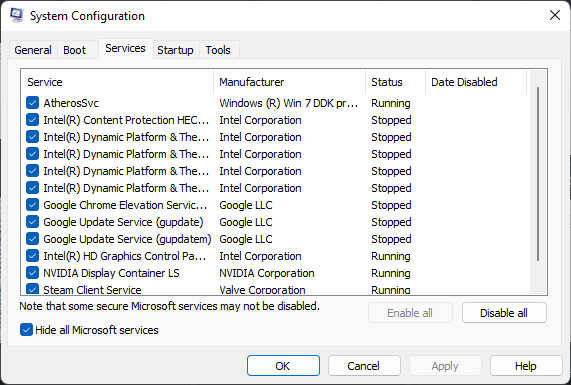
Lastly, if none of these suggestions helped you, perform Clen Boot and then carry out the Copy operation and see.
This will get rid of possible interruptions from third-party apps and device drivers.
Read: The requested pause, continue, or stop is not valid for this service
We hope these suggestions help you.
What is error Unable to perform requested operation?
The error Unable to perform the requested operation usually occurs when a Copy operation fails due to a corrupted disk, File access or permission issues. Conflicts from third-party apps or Insufficient disk space.
How to fix Windows Resource Protection could not perform the requested operation?
To fix the Windows Resource Protection could not perform the requested operation, you need to check if the Windows Modules Installer service is running and run the System File Checker tool from Windows Recovery Environment.